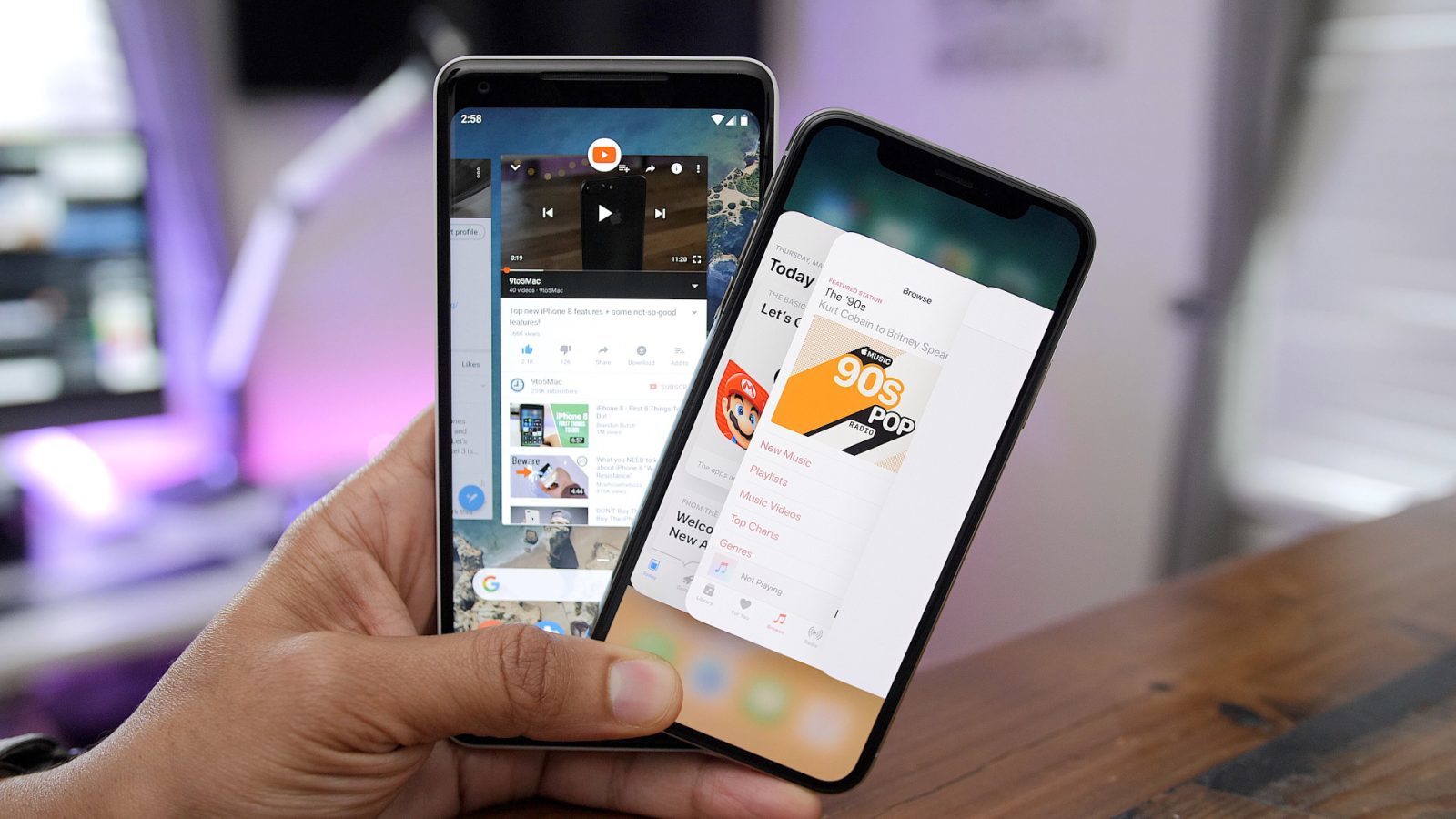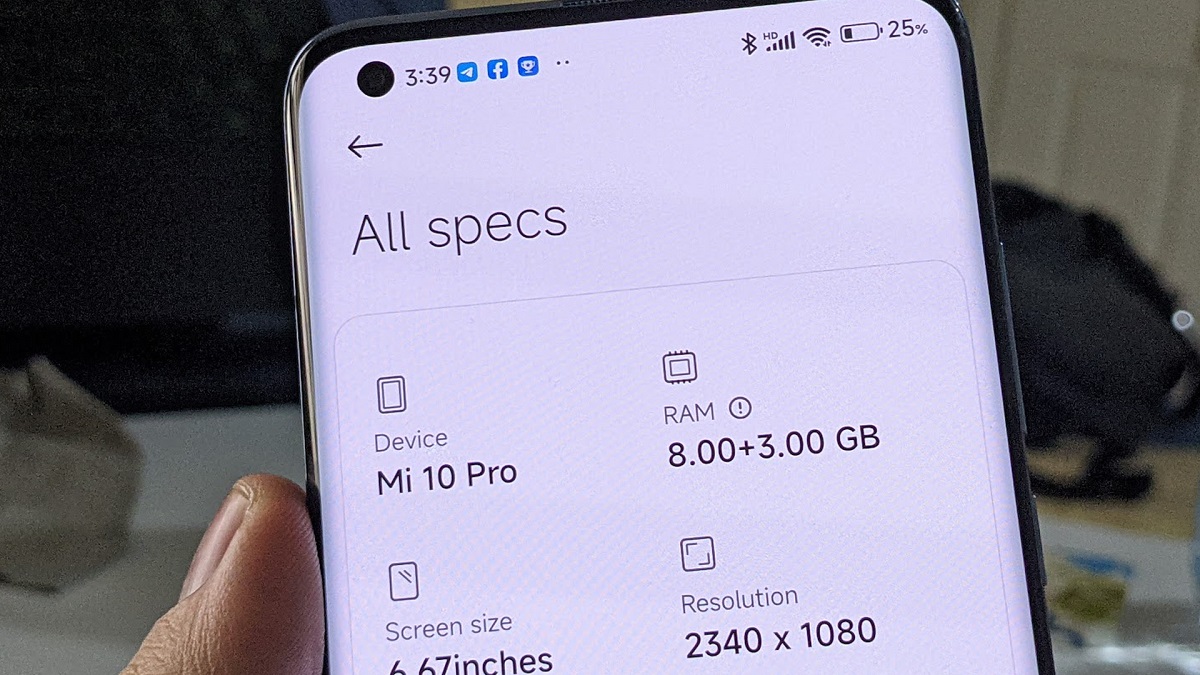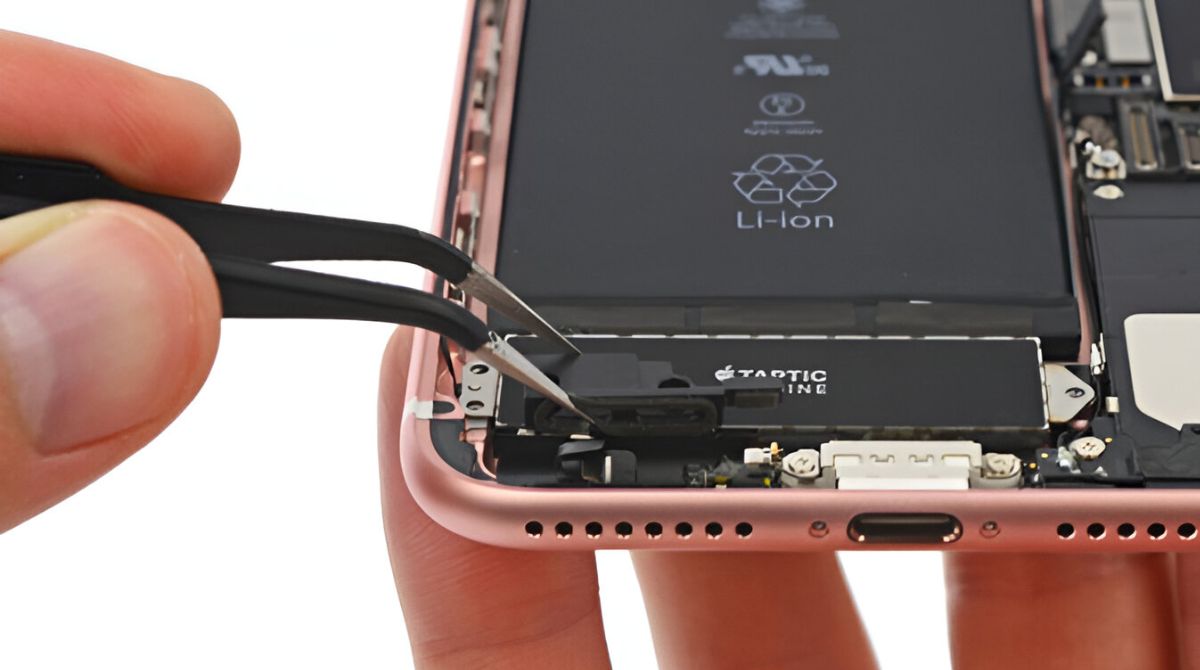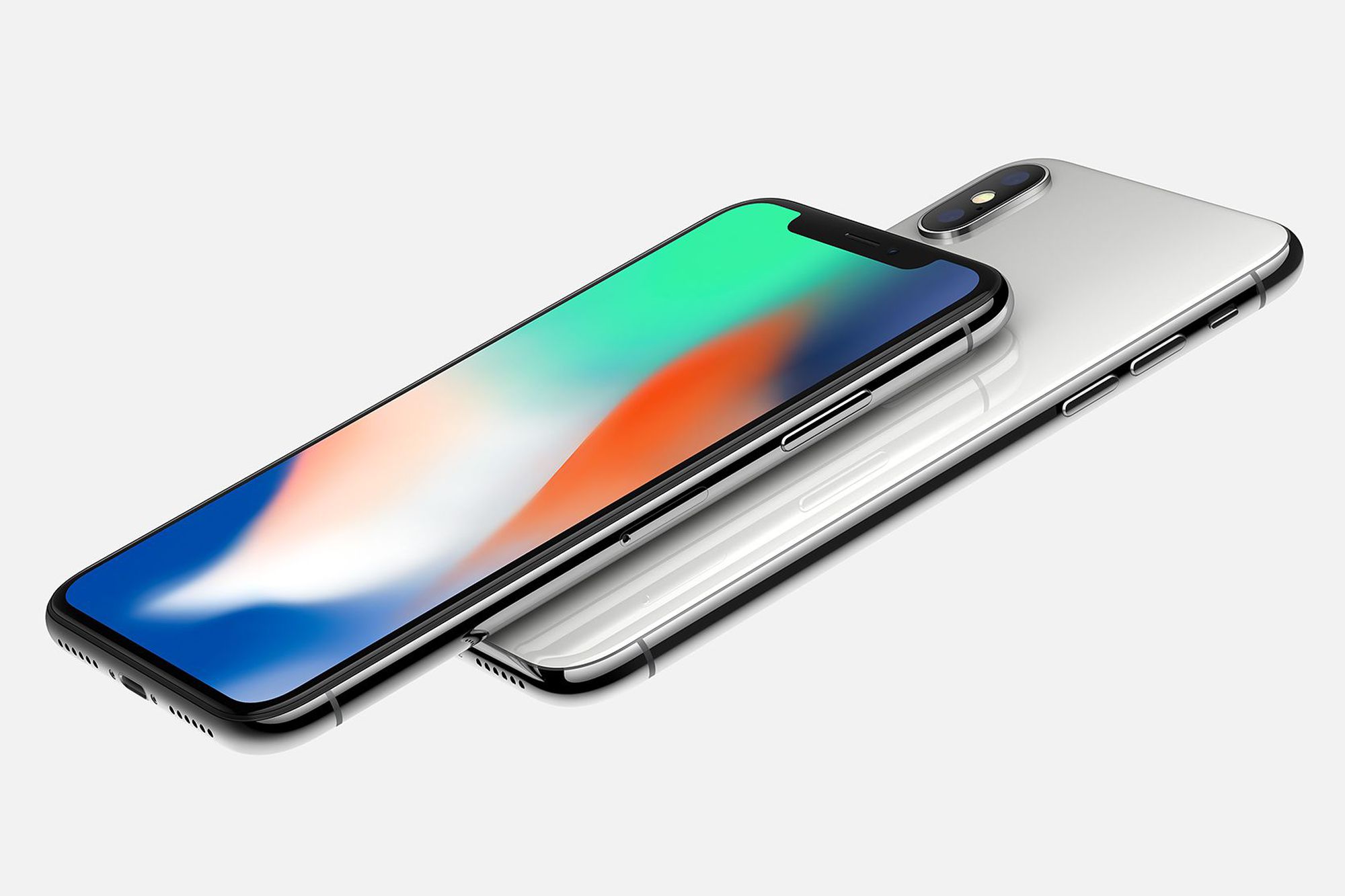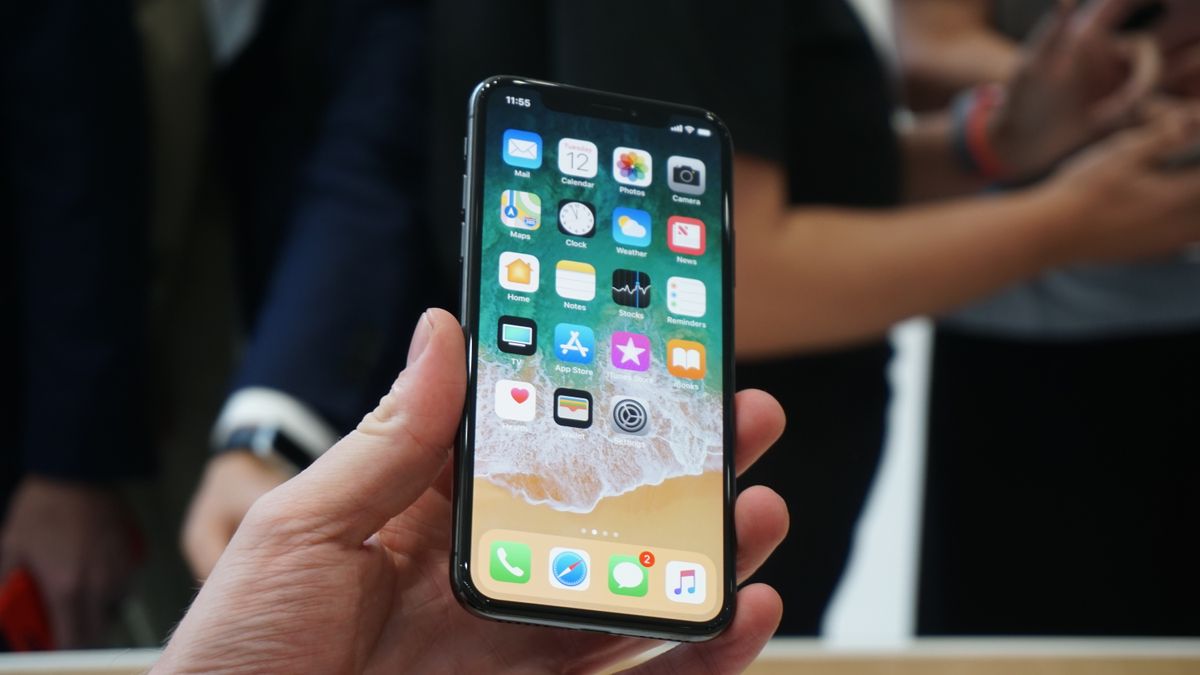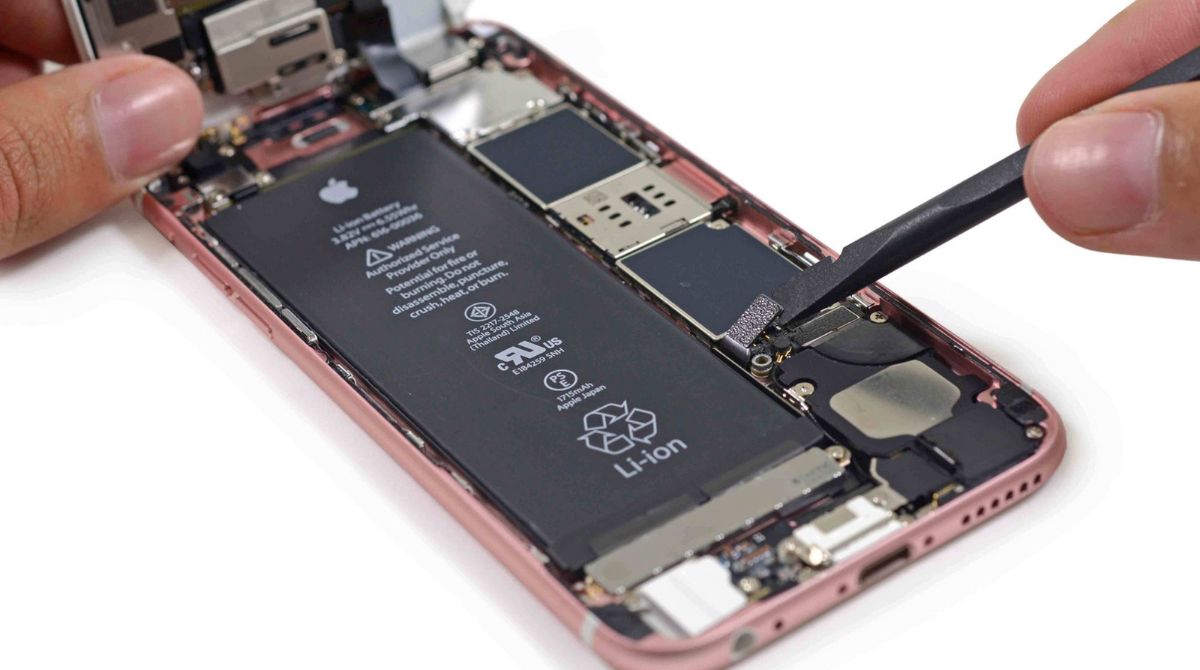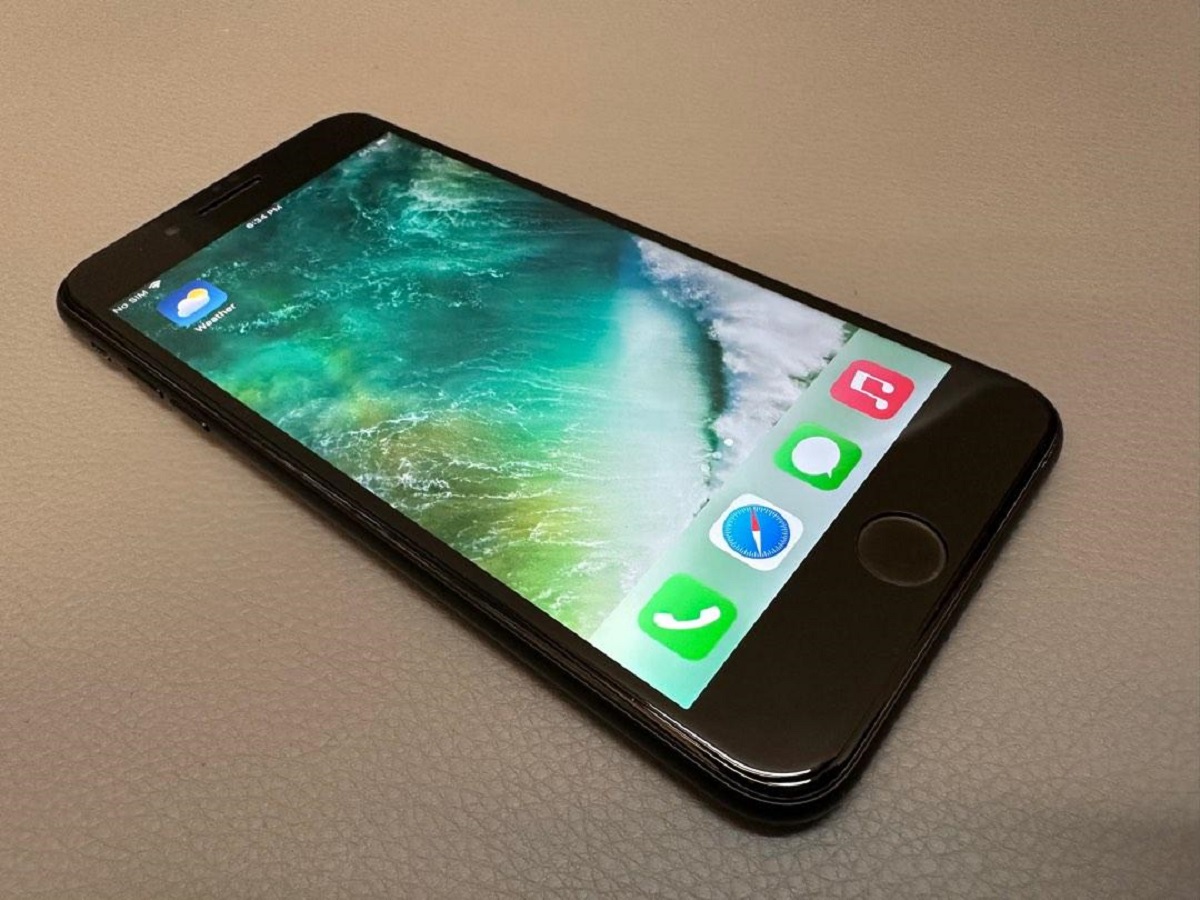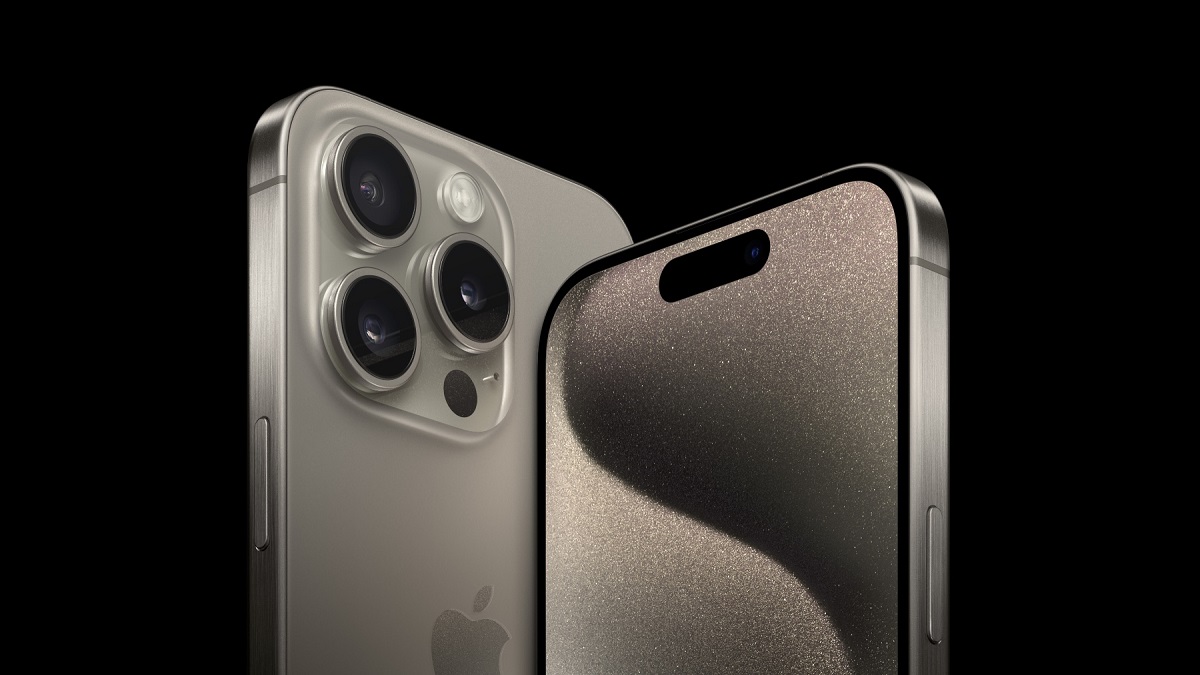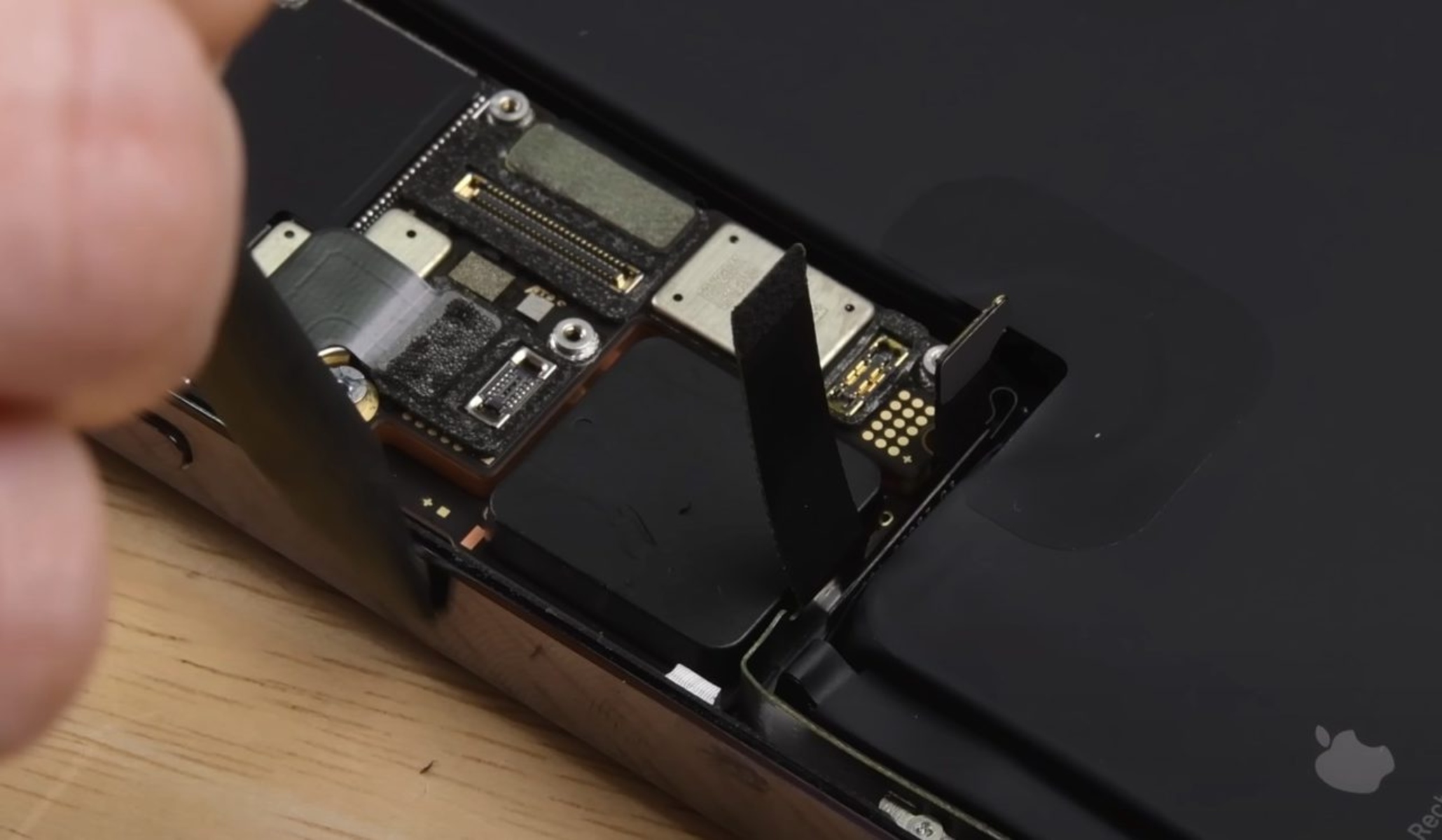Introduction
iPhones have always been known for their sleek design, cutting-edge features, and impressive performance. However, one aspect that has often raised questions and sparked debates among tech enthusiasts is the amount of RAM included in iPhones. Compared to their Android counterparts, iPhones typically have significantly less RAM. But why is that the case?
To understand why iPhones have comparatively less RAM, it is essential to delve into the basics of RAM itself. RAM, or Random Access Memory, is a type of volatile memory that stores data that is actively being used by the device. It acts as a temporary workspace for the processor, allowing for quick access to instructions and data, which ultimately affects the device’s speed and multitasking capabilities.
Over the years, iPhones have followed a consistent trend of having lower RAM compared to Android devices. This can be attributed to a combination of factors, including Apple’s hardware and software optimization, efficient memory management techniques, and the evolution of iOS itself.
One of the primary advantages of having less RAM in iPhones is efficient memory utilization. Apple’s meticulous hardware and software integration allows them to optimize the performance of iPhones, even with limited memory resources. By reducing the amount of RAM, Apple forces both users and developers to adopt memory-efficient practices, resulting in smoother performance and longer battery life.
The evolution of iOS has also played a significant role in minimizing the need for excessive RAM in iPhones. Apple has introduced numerous enhancements and refinements with each new iOS version, designed to enhance memory management and ensure efficient operation. These optimizations include techniques like app suspension, intelligent background refresh, and dynamic memory allocation, all of which contribute to a smoother user experience.
While hardware considerations undoubtedly come into play when determining the RAM capacity of a device, Apple has always paid meticulous attention to the integration of its hardware and software. This tight integration allows iPhones to deliver exceptional performance and fluid multitasking capabilities, even with smaller RAM capacities.
Ultimately, the RAM capacity of an iPhone has a significant impact on its overall performance. However, Apple’s focus on optimization, efficient memory management techniques, and integration of hardware and software work together to compensate for the lower RAM capacity, resulting in a seamless user experience.
In the following sections, we will delve deeper into the advantages of having less RAM, explore the memory management techniques employed on iPhones, and examine the impact on performance. By doing so, we can gain a better understanding of why iPhones are able to deliver impressive performance, despite their relatively lower RAM capacity.
The Basics of RAM
Before diving into why iPhones have less RAM, let’s explore the fundamentals of RAM itself. RAM, or Random Access Memory, is a crucial component of any computing device, including smartphones like iPhones. It is a type of volatile memory that temporarily stores data and instructions that are actively being used by the device’s processor.
When you open an app, launch a game, or perform any task on your iPhone, the relevant data and instructions are loaded into the device’s RAM. This allows the processor to quickly access the necessary information, resulting in faster app launches, smoother multitasking, and overall enhanced performance.
RAM is often referred to as the device’s “short-term memory” as it is cleared whenever the device is powered off or restarted. Unlike the device’s storage memory (such as internal storage or an SD card), which retains data even when the device is powered off, RAM is volatile and provides temporary storage.
The size of RAM in a smartphone is measured in gigabytes (GB) and typically ranges from 1GB to 12GB or even higher in some high-end Android devices. However, iPhones have historically had much lower RAM capacities compared to their Android counterparts, with the latest iPhone models usually ranging between 3GB and 6GB, depending on the specific variant.
RAM plays a crucial role in enabling multitasking on smartphones. When you switch between apps or perform multiple tasks simultaneously, the data and instructions required for each task are temporarily stored in the device’s RAM. This allows for seamless transitions between apps and ensures that all tasks can be carried out smoothly.
Having more RAM generally means that a device can handle a higher number of tasks simultaneously without experiencing performance issues. It provides a larger working space for the device’s processor, enabling efficient multitasking and preventing slowdowns or app crashes.
However, it’s important to note that the relationship between RAM and overall performance is not as straightforward as “more RAM equals better performance.” Several other factors, such as the device’s operating system, processor, storage type, and software optimization, also play a significant role in determining the device’s overall performance.
In the next sections, we will explore the factors that influence the amount of RAM included in iPhones and discuss the advantages of having relatively lower RAM capacities. By understanding the reasons behind this design choice, we can gain a deeper appreciation for the efficient performance and user experience iPhones offer.
RAM in iPhones: The History
The history of RAM in iPhones can be traced back to the initial release of the iconic device in 2007. The first-generation iPhone, often referred to as iPhone 2G, featured a mere 128MB of RAM. Considering the device’s capabilities at the time, this RAM capacity was sufficient for running essential apps and delivering a smooth user experience.
As technology advanced and demand for more powerful smartphones increased, Apple gradually increased the RAM capacity in subsequent iPhone models. The iPhones that followed, such as the iPhone 3G and iPhone 4, were equipped with 256MB and 512MB of RAM, respectively.
In 2011, Apple introduced the iPhone 4S, which marked a significant milestone in the iPhone’s RAM history. The device featured 1GB of RAM, doubling the previous generation. This increased RAM capacity allowed for improved multitasking, smoother app performance, and enhanced overall user experience.
With the release of the iPhone 5 in 2012, Apple continued to push the boundaries of performance while maintaining relatively conservative RAM capacities. The iPhone 5, iPhone 5C, and iPhone 5S all featured 1GB of RAM, which remained the standard for several subsequent iPhone models.
It wasn’t until 2015, with the launch of the iPhone 6S and iPhone 6S Plus, that Apple made another significant leap in RAM capacity. These devices boasted 2GB of RAM, allowing for even more efficient multitasking and improved performance.
Since then, Apple has steadily increased the RAM capacity in its iPhone lineup. The iPhone 7, iPhone 8, and iPhone SE (2020) featured 2GB of RAM, while the iPhone X, XS, XR, and the latest iPhone 11 series all come equipped with 4GB of RAM.
It’s worth noting that while these RAM capacities might seem relatively low compared to some high-end Android devices, Apple’s meticulous software and hardware optimization have enabled iPhones to deliver impressive performance and multitasking capabilities even with smaller RAM capacities.
Apple’s conservative approach to RAM in iPhones can be attributed to the company’s commitment to delivering an optimized user experience. By keeping RAM capacities conservative, Apple ensures that its devices have efficient and effective memory management techniques in place, resulting in snappy performance and minimal resource usage.
As Apple continues to innovate and release new iPhone models, it’s likely that we will see further advancements in RAM capacity alongside improvements in other hardware and software aspects. By finding the right balance between RAM, processing power, and software optimization, Apple consistently provides iPhones that offer an exceptional user experience.
In the upcoming sections, we will explore the advantages of having relatively lower RAM capacities in iPhones, as well as the memory management techniques and hardware considerations that contribute to their impressive performance.
The Advantages of Having Less RAM
While it may seem counterintuitive, there are several advantages to having relatively less RAM in iPhones. Apple’s strategic approach to RAM optimization and efficient memory management techniques provide a seamless user experience and contribute to the overall performance of the device.
One key advantage is efficient memory utilization. By including less RAM in iPhones, Apple encourages users and developers to adopt memory-efficient practices. This means that apps are designed to use the available resources more efficiently, resulting in reduced memory usage and improved overall performance. It also helps conserve battery life by minimizing unnecessary background processes and memory consumption.
Having less RAM also promotes smoother multitasking capabilities. iPhones are renowned for their ability to seamlessly switch between apps and perform multiple tasks simultaneously, despite having lower RAM capacity compared to some Android devices with higher RAM configurations. Apple achieves this by implementing sophisticated memory management techniques that prioritize active tasks and intelligently allocate resources. This ensures that foreground apps receive the necessary resources, providing a fluid and responsive multitasking experience.
Furthermore, the integration and optimization of hardware and software contribute to the advantages of having less RAM. Apple carefully designs both the hardware and software components of its devices to work harmoniously. This tight integration allows for more efficient utilization of resources, resulting in excellent performance even with limited RAM capacity. Apple’s custom-designed chips, like the A-series processors, work hand-in-hand with iOS to ensure swift and responsive performance without the need for excessive RAM.
Another advantage of having less RAM is the reduced risk of slowdowns and app crashes. Apple’s rigorous testing and optimization processes ensure that the available RAM is effectively utilized, minimizing the chances of resource bottlenecks. This means that even with the lower RAM capacity, iPhones can handle demanding apps and resource-intensive tasks without experiencing significant performance issues.
The lower RAM capacity in iPhones also allows for a more cost-effective design. By including less RAM, Apple can keep the production costs down, which in turn helps to maintain a competitive pricing strategy for their devices. This enables more users to enjoy the benefits of iOS and Apple’s ecosystem at a relatively affordable price point.
Overall, the advantages of having relatively less RAM in iPhones are evident through the optimized memory utilization, efficient multitasking capabilities, reduced risk of performance issues, and cost-effectiveness. Apple’s dedication to hardware-software integration and their focus on resource optimization ensure that iPhones deliver a smooth, responsive, and reliable user experience, even with lower RAM capacities.
In the next sections, we will explore the memory management techniques employed on iPhones and delve into the hardware considerations that contribute to the impressive performance of these devices.
The Evolution of iOS
The evolution of iOS, the operating system that powers iPhones, has been instrumental in optimizing RAM usage and delivering efficient performance. Since its inception, iOS has undergone significant advancements, introducing new features, optimizations, and memory management techniques that contribute to its seamless operation.
With each new version of iOS, Apple has focused on refining the operating system to make it faster, more responsive, and resource-efficient. This commitment to improvement is evident in the evolution of iOS across different iPhone models.
One noteworthy aspect of iOS is its ability to prioritize active tasks and manage memory allocation effectively. iOS employs sophisticated memory management techniques, such as app suspension, to optimize RAM utilization. This technique suspends background apps, freeing up memory for foreground apps, and conserving system resources. By efficiently managing the available RAM, iOS ensures that the device remains responsive and capable of handling multiple tasks without excessive slowdowns or crashes.
Another notable feature introduced in iOS is intelligent background refresh. This feature allows apps to update their content in the background, ensuring that the latest information is available when the user opens the app. However, iOS intelligently manages these background refresh activities, avoiding unnecessary memory usage and optimizing battery life.
Additionally, iOS implements dynamic memory allocation, which dynamically adjusts the amount of memory allocated to various apps based on their usage patterns. This allows iOS to allocate resources effectively, ensuring optimal performance for active apps while minimizing the impact on other system processes.
Over the years, iOS has also become more efficient in managing system resources, including RAM. The operating system is designed to be lightweight and streamlined, reducing unnecessary overhead and optimizing resource utilization. This optimized resource management enables iPhones to perform seamlessly, even with relatively lower RAM capacities when compared to some competing devices.
Apple’s continuous dedication to refining iOS has resulted in significant performance improvements over the years, enabling iPhones to deliver excellent multitasking capabilities and smooth user experiences. iOS updates not only introduce new features but also include enhancements to memory management, resource allocation, and system optimization, ensuring that iPhones remain at the forefront of performance and overall user satisfaction.
In the next sections, we will explore the memory management techniques employed specifically on iPhones and the hardware considerations that contribute to their impressive performance.
Memory Management Techniques on iPhones
Efficient memory management is crucial for ensuring optimal performance and resource utilization on iPhones. Apple employs a range of memory management techniques that contribute to the seamless operation of these devices, despite their relatively lower RAM capacities.
One of the key memory management techniques used on iPhones is app suspension. When an app is sent to the background, iOS suspends it, meaning that it remains in memory but is not actively running or consuming resources. This allows the device to free up memory for foreground apps, optimizing RAM usage and ensuring that active tasks receive the necessary resources for smooth performance. When the user returns to the suspended app, it quickly resumes from where it left off, providing a seamless user experience.
iOS also incorporates intelligent background refresh, which allows certain apps to update their content in the background. For example, news apps can fetch fresh articles or social media apps can download new posts. However, iOS carefully manages this background activity, considering factors such as battery life and available resources. This approach helps reduce unnecessary memory usage while ensuring that the latest information is available when the user returns to the app.
Furthermore, iOS implements dynamic memory allocation, which adjusts the amount of memory allocated to apps based on their usage patterns. This means that an app actively being used will have more memory allocated to it, while less frequently used apps may have their memory reduced. This dynamic allocation optimizes resource utilization and prevents excessive memory consumption, allowing the device to allocate RAM effectively and deliver smooth performance.
iOS also utilizes a technique called memory compression. This technique compresses inactive app data to minimize the physical memory footprint, thereby freeing up additional RAM for other active apps. By compressing memory, iOS can maximize the available memory resources and ensure efficient multitasking capabilities.
Additionally, iOS incorporates low memory notifications to handle situations where the device’s available RAM becomes limited. In these scenarios, the operating system sends warnings to running apps, urging them to release any unnecessary resources and optimize their memory usage. This proactive approach helps prevent potential performance issues and ensures that the device remains responsive.
By implementing these memory management techniques, combined with efficient resource allocation and intelligent background activity management, iPhones are able to deliver exceptional performance and multitasking capabilities. Apple’s meticulous focus on optimizing memory usage and streamlining resource allocation allows iPhones to provide a seamless user experience, even with relatively lower RAM capacities.
In the following section, we will delve into the hardware considerations that further contribute to the impressive performance of iPhones.
Hardware Considerations
In addition to software optimization and memory management techniques, the hardware considerations of iPhones play a crucial role in their impressive performance, despite having relatively lower RAM capacities.
Apple has always been known for its meticulous attention to detail when it comes to hardware design. iPhones are equipped with custom-designed processors, like the A-series chips, which work seamlessly with iOS to deliver powerful performance. These processors are specifically optimized to balance power efficiency and processing capabilities, ensuring that iPhones can handle demanding tasks while conserving energy.
The integration of hardware and software is a fundamental aspect of iPhones. Apple designs both the hardware and software components in-house, allowing for tight integration and optimization. This integration enables iPhones to maximize the available resources effectively, including RAM. By designing the hardware and software to work harmoniously, Apple eliminates inefficiencies and ensures the smooth operation of each component, resulting in seamless performance.
Apple’s focus on hardware efficiency extends beyond the processor. Every component inside an iPhone is carefully selected and designed to minimize power consumption and heat generation. This includes the display, battery, storage, and other internal components. By using energy-efficient components, Apple can optimize resource usage and enhance overall performance without relying solely on larger amounts of RAM.
Another important hardware consideration is the storage technology used in iPhones. iPhones typically use high-speed flash storage, which allows for quick access to data and efficient app loading times. This fast storage technology contributes to the overall responsiveness and performance of the device. By prioritizing speedy storage, iPhones can compensate for the lower RAM capacity by providing quick data retrieval and seamless multitasking.
Apple’s commitment to hardware excellence extends to the design and construction of other components as well. The physical design of iPhones, including the use of high-quality materials and precision engineering, plays a role in ensuring that the device operates smoothly. The seamless integration of components, along with the robust build quality of iPhones, contributes to their overall performance and durability.
It’s important to note that while hardware considerations are significant, they work in conjunction with software optimization and memory management techniques. Apple’s holistic approach to device design ensures that the hardware and software components complement each other, resulting in an exceptional user experience.
Through careful hardware selection, optimized software, and meticulous integration, Apple has been able to create iPhones that deliver outstanding performance despite having relatively lower RAM capacities. Their commitment to efficient resource utilization and seamless multitasking ensures that iPhones consistently provide a smooth and responsive user experience.
In the final section, we will explore the impact of RAM capacity on performance and discuss the relationship between third-party apps and RAM usage on iPhones.
The Impact on Performance
The RAM capacity of a device can have a significant impact on its overall performance. While iPhones have relatively lower RAM capacities compared to some Android devices, Apple’s optimization strategies and efficient memory management techniques help mitigate the impact and ensure excellent performance.
Having less RAM in an iPhone means that the device has limited memory resources to work with. However, Apple’s hardware and software integration, combined with their focus on resource optimization, compensate for this limitation.
One area where RAM capacity can directly impact performance is multitasking. With more RAM, a device can hold a larger number of apps in memory simultaneously, allowing for smoother transitions between tasks. However, iPhones manage multitasking efficiently by intelligently allocating and freeing up memory as needed. This means that even with lower RAM capacities, iPhones can handle simultaneous tasks effectively and provide a seamless multitasking experience.
RAM capacity also influences how apps perform. More RAM allows apps to load and run more quickly. When an app has ample memory available, it can store more data in memory, resulting in faster access times and smoother operation. However, Apple’s software optimization ensures that apps are designed to work efficiently within the available RAM, regardless of its capacity. This optimization allows apps to run smoothly and deliver excellent performance, even on devices with relatively lower RAM capacities.
Another aspect affected by RAM capacity is the ability to maintain app states in the background. With more RAM, devices can keep apps running in the background for longer periods, enabling quick resumption when switching back to those apps. However, iPhones utilize app suspension and intelligent background refresh to optimize memory usage. By suspending apps and intelligently managing background processes, iPhones are able to provide excellent performance and preserve battery life, even with lesser RAM.
It’s important to note that while RAM capacity does impact performance, it is not the sole determining factor. Other hardware components, such as the processor, storage technology, and overall software optimization, all contribute to the overall performance of a device. Apple’s attention to these areas ensures that iPhones deliver exceptional performance, regardless of their lower RAM capacities.
In the next section, we will explore the relationship between third-party apps and RAM usage on iPhones, providing insights into how app developers and users can optimize their usage for the best performance.
Third-Party Apps and RAM Usage
Third-party apps are an integral part of the iPhone experience, providing additional features and functionality beyond what comes pre-installed on the device. However, app developers and users need to be mindful of their RAM usage to ensure optimal performance on iPhones.
When it comes to third-party apps, RAM usage varies depending on the design, functionality, and optimization of each app. Some apps may be more resource-intensive, requiring more RAM to run smoothly, while others may be lightweight and optimized for efficient performance.
Apple provides developers with guidelines and best practices to optimize their apps for efficient resource usage, including RAM management. By following these guidelines, developers can design apps that utilize the available RAM effectively and deliver a smooth user experience.
App developers can implement techniques such as lazy loading, which loads app resources only when they are required, to minimize initial memory consumption. They can also utilize techniques like recycling and caching to efficiently manage memory usage within their apps. Proper memory management ensures that the app uses memory when it is needed and releases it when it is no longer required, optimizing overall RAM utilization.
As for users, managing app usage and multitasking can greatly impact RAM usage on their iPhones. It’s essential to be mindful of the number of apps running in the background and the resources they consume. Closing unnecessary apps or using the app switcher to remove idle apps from memory can help free up RAM for active apps, contributing to better overall performance.
Regularly updating apps to the latest versions is also important. Developers often release updates to optimize their apps, including improvements in memory usage. By keeping apps up to date, users can benefit from these optimizations and ensure that their apps are running efficiently within the available RAM.
Another aspect users should consider is the number of apps installed on their device. Having a large number of apps can consume more RAM, especially if they run processes or services in the background. Evaluating and removing apps that are no longer used or deemed unnecessary can help free up memory resources, potentially improving overall device performance.
It’s worth noting that while third-party apps can have an impact on RAM usage, Apple’s hardware-software integration and memory management techniques help ensure that iPhones deliver excellent performance even with varying app requirements. As long as developers and users are mindful of efficient resource usage and follow best practices, third-party apps can seamlessly coexist with the optimized system performance of iPhones.
In the final section, we will summarize the key insights discussed and provide a recap of why iPhones have relatively lower RAM capacities without compromising on performance.
Conclusion
In conclusion, iPhones have been designed with careful consideration of RAM capacity, prioritizing efficient resource utilization and optimal performance. Apple’s hardware-software integration, memory management techniques, and software optimization play vital roles in ensuring that iPhones deliver exceptional performance, despite their relatively lower RAM capacities compared to some Android devices.
The advantages of having less RAM in iPhones include efficient memory utilization, smoother multitasking capabilities, and reduced risk of performance issues. By encouraging memory-efficient practices, Apple optimizes app performance, maintains longer battery life, and enhances overall user experience.
The evolution of iOS has further contributed to efficient RAM usage and improved performance on iPhones. With each new version, iOS introduces new features, optimizations, and memory management techniques that enhance overall system responsiveness and multitasking capabilities.
Hardware considerations, such as custom-designed processors, streamlined memory architectures, and energy-efficient components, also contribute to the impressive performance of iPhones. Apple’s meticulous attention to hardware design and integration ensures maximum resource utilization and seamless operation.
Additionally, third-party apps can have an impact on RAM usage, but developers and users can optimize their apps and usage to ensure efficient resource consumption. Following Apple’s guidelines for app optimization and adopting mindful app management practices can help maintain optimal performance.
In summary, iPhones demonstrate that higher RAM capacities do not necessarily equate to superior performance. Through software optimization, memory management strategies, hardware considerations, and efficient resource utilization, Apple has built a reputation for iPhones that deliver exceptional multitasking capabilities, smooth performance, and a reliable user experience.
So, the next time you wonder why iPhones have relatively lower RAM capacities, remember that it is a deliberate choice by Apple to strike a balance between performance, power efficiency, and cost-effectiveness. Rest assured, your iPhone is optimized to provide an outstanding user experience, even with its conservative RAM configuration.







